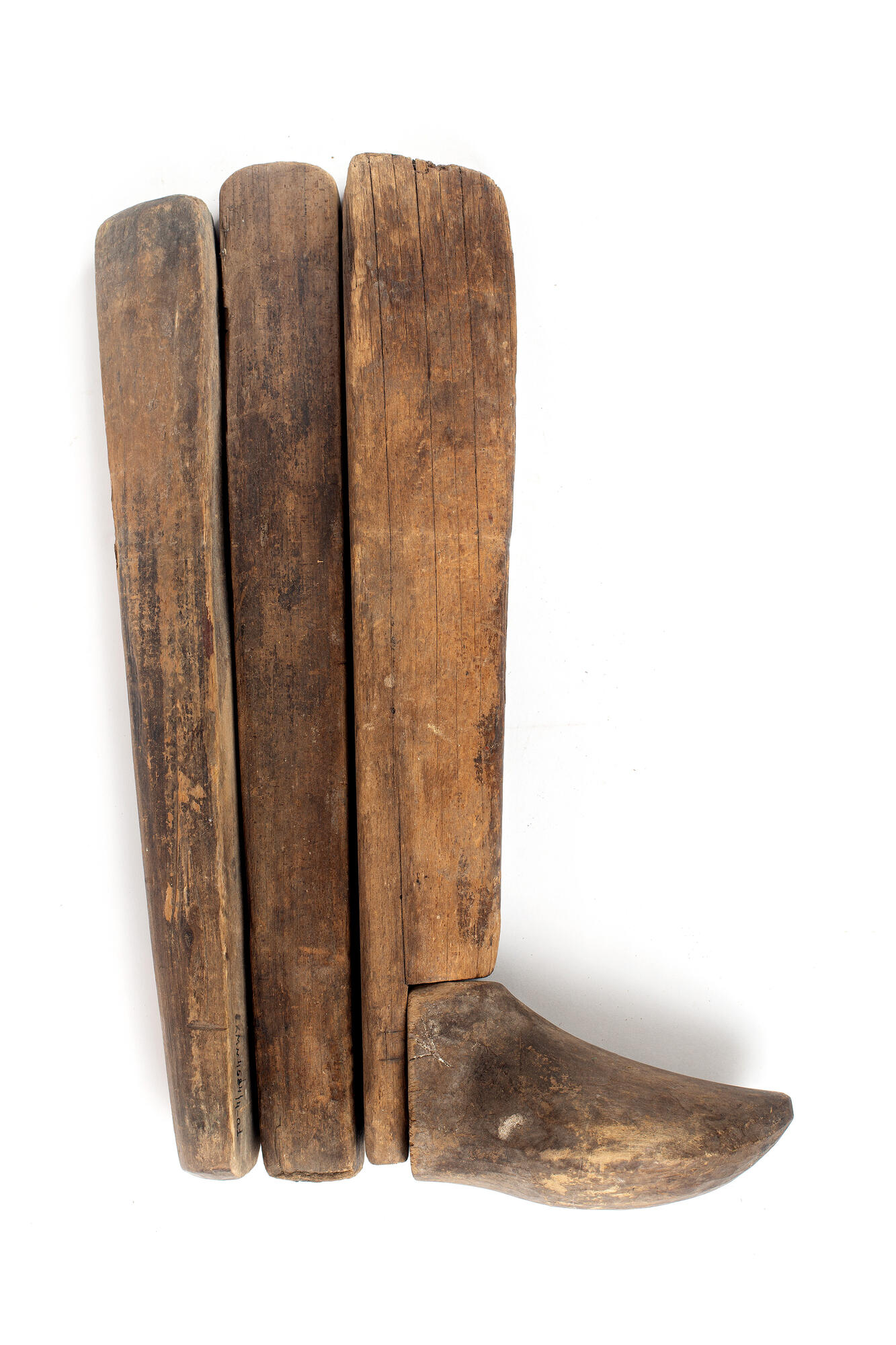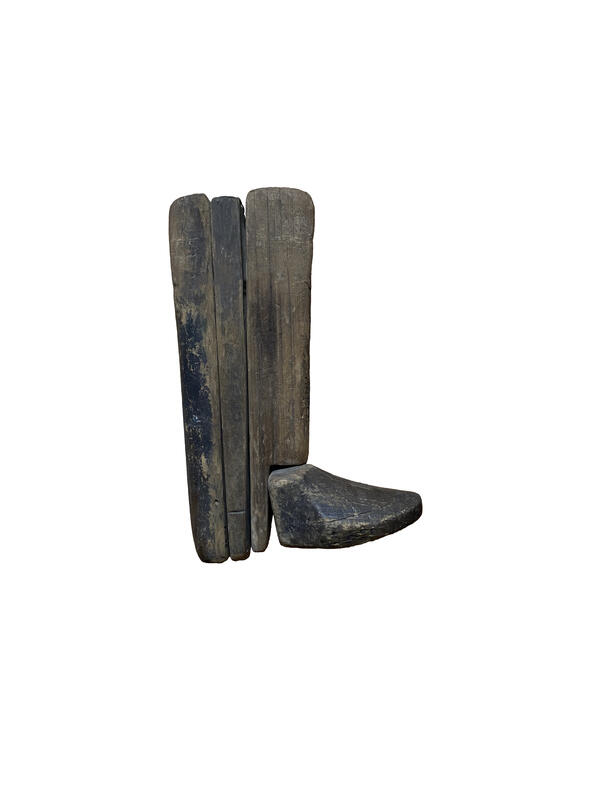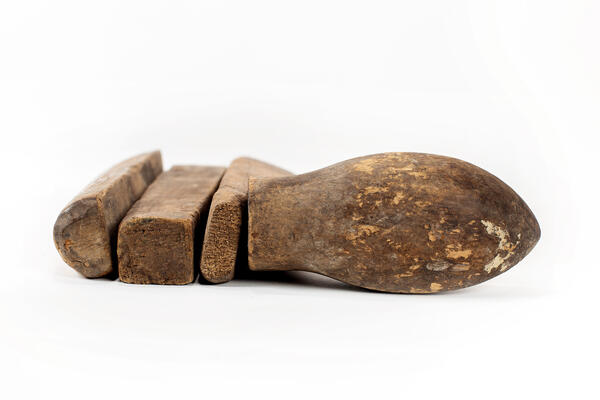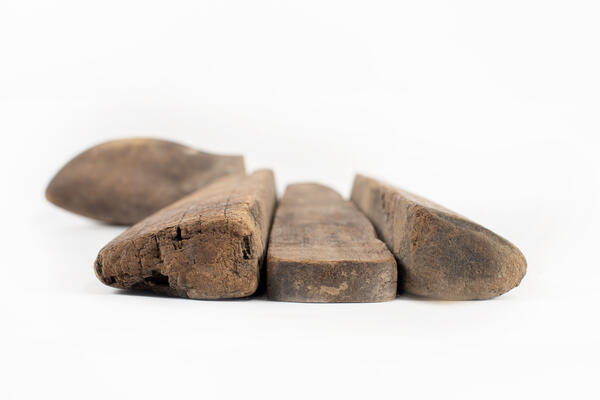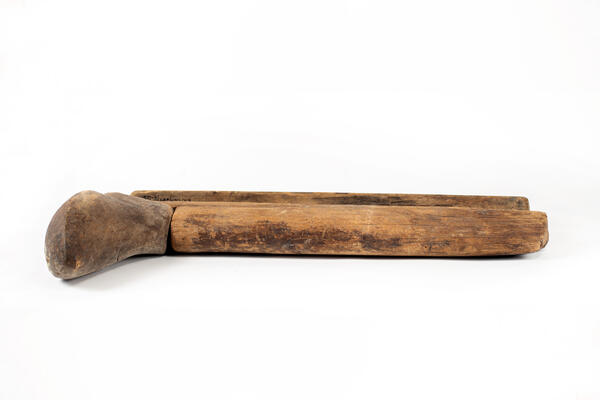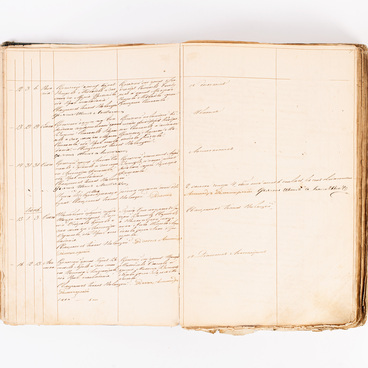Valenki are traditional Russian winter shoes. Felting appeared in the Volga region in the late 17th century. The first models of felt boots were similar to galoshes, they were called “chuni”, “coty”, and “valentsy” and were worn all year round. A part that tightly fitted around the calf was sewn to the valenki for winter. Later, in the Nizhny Novgorod Region, people learned how to make seamless felt boots, which gradually became popular throughout the country.
The techniques and secrets of the craft were passed down from generation to generation. There are still people in the outback of the Nizhny Novgorod Region who know the ancient felting technique. The process of making felt boots was usually divided into four stages. The first one took place in a “rolling station”, or a workhouse. First, the wool was sorted, then broken with a special device — a “luchok”, a tool made of a wooden bar. Short sticks were attached along its edges to stretch a string made of lamb intestines. To improve the quality of wool, it was sprinkled with flour or rubbed with soap.
The second stage was “rolling”. As a result, an inside-out “backwards boot” was made. At this stage, the felt boots were very large, because they were to be boiled, after which they shrunk. The boiling took place in a wash-house or a specially adapted bath-house. There was a large tank of water that was brought to a boil. After soaking in boiling water, the boot was rolled, put onto a wooden block and given the right size and correct shape.
The final stages of making felt boots were dyeing and drying. This was usually performed by women. Felt boots were dyed in large cast-iron pots, which were periodically removed from the oven to stir the water and check how much the color of the item changed. Often boots made of gray wool were tinted with black sandalwood-based pigments, and the lighter ones were bleached in the sun: they were hung on horn-shaped spruce posts of the fence.
To make a smooth boot, it was rubbed with pumice stone, hence it was called a “rubbed” boot. Shaggy boots were carded with a plank with teeth, a “drachka”. Felt boots were whitewashed with chalk, and later people learned to dye them using a mixture of water, milk and lead whitewash.
At the very end, the last was taken out of the felt boot and the product was ready, it could be sent to be sold at a fair. Manufacturers of felt boots — pimokaty — were in close contact with cattle breeders in order to buy good wool for an affordable price. Today, valenki are a Russian souvenir, so they are made in a variety of colors and shapes, with a heel, embroidery, applique and branding.
The techniques and secrets of the craft were passed down from generation to generation. There are still people in the outback of the Nizhny Novgorod Region who know the ancient felting technique. The process of making felt boots was usually divided into four stages. The first one took place in a “rolling station”, or a workhouse. First, the wool was sorted, then broken with a special device — a “luchok”, a tool made of a wooden bar. Short sticks were attached along its edges to stretch a string made of lamb intestines. To improve the quality of wool, it was sprinkled with flour or rubbed with soap.
The second stage was “rolling”. As a result, an inside-out “backwards boot” was made. At this stage, the felt boots were very large, because they were to be boiled, after which they shrunk. The boiling took place in a wash-house or a specially adapted bath-house. There was a large tank of water that was brought to a boil. After soaking in boiling water, the boot was rolled, put onto a wooden block and given the right size and correct shape.
The final stages of making felt boots were dyeing and drying. This was usually performed by women. Felt boots were dyed in large cast-iron pots, which were periodically removed from the oven to stir the water and check how much the color of the item changed. Often boots made of gray wool were tinted with black sandalwood-based pigments, and the lighter ones were bleached in the sun: they were hung on horn-shaped spruce posts of the fence.
To make a smooth boot, it was rubbed with pumice stone, hence it was called a “rubbed” boot. Shaggy boots were carded with a plank with teeth, a “drachka”. Felt boots were whitewashed with chalk, and later people learned to dye them using a mixture of water, milk and lead whitewash.
At the very end, the last was taken out of the felt boot and the product was ready, it could be sent to be sold at a fair. Manufacturers of felt boots — pimokaty — were in close contact with cattle breeders in order to buy good wool for an affordable price. Today, valenki are a Russian souvenir, so they are made in a variety of colors and shapes, with a heel, embroidery, applique and branding.
